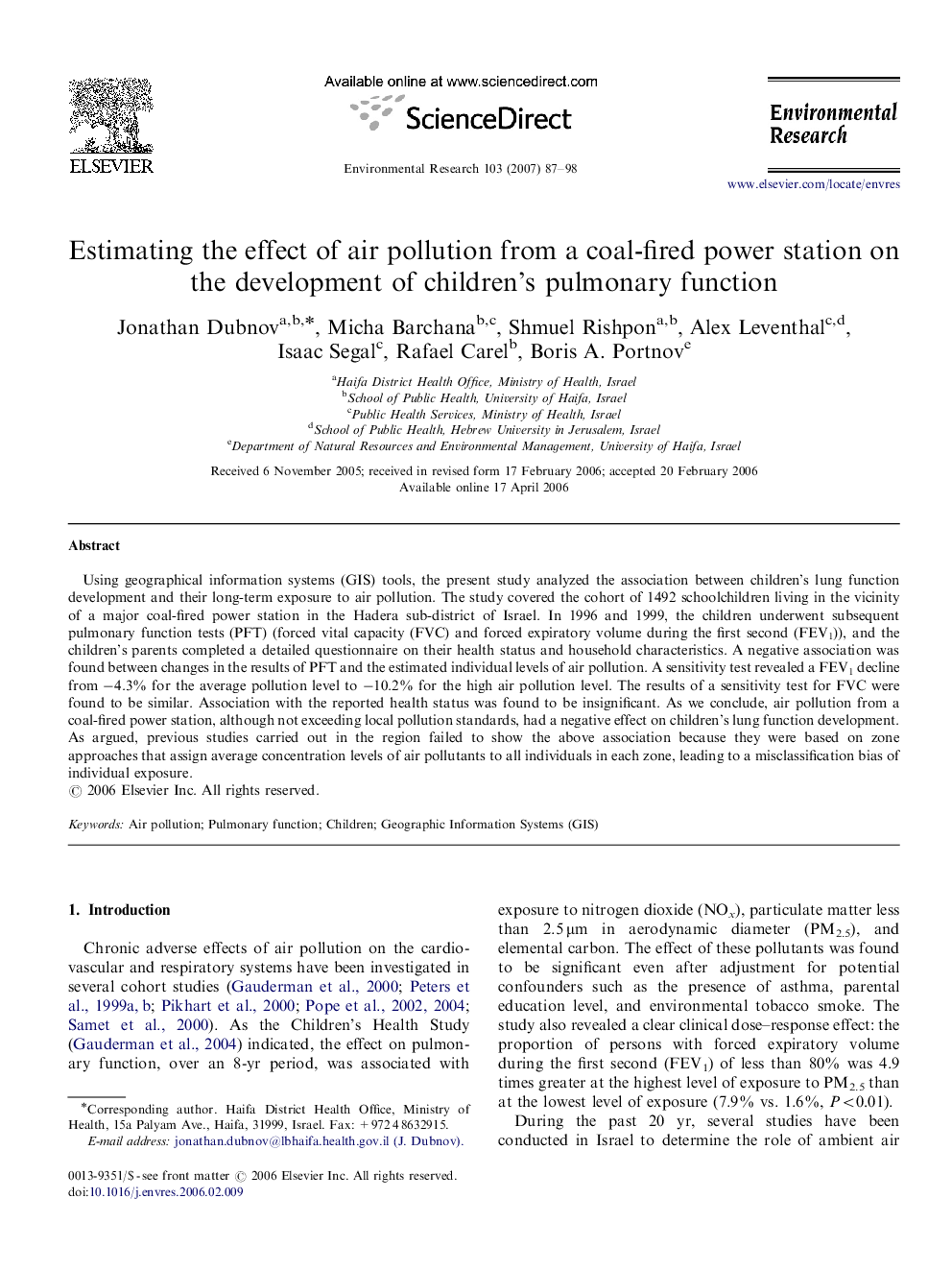| Article ID | Journal | Published Year | Pages | File Type |
|---|---|---|---|---|
| 4471004 | Environmental Research | 2007 | 12 Pages |
Using geographical information systems (GIS) tools, the present study analyzed the association between children's lung function development and their long-term exposure to air pollution. The study covered the cohort of 1492 schoolchildren living in the vicinity of a major coal-fired power station in the Hadera sub-district of Israel. In 1996 and 1999, the children underwent subsequent pulmonary function tests (PFT) (forced vital capacity (FVC) and forced expiratory volume during the first second (FEV1)), and the children's parents completed a detailed questionnaire on their health status and household characteristics. A negative association was found between changes in the results of PFT and the estimated individual levels of air pollution. A sensitivity test revealed a FEV1 decline from −4.3% for the average pollution level to −10.2% for the high air pollution level. The results of a sensitivity test for FVC were found to be similar. Association with the reported health status was found to be insignificant. As we conclude, air pollution from a coal-fired power station, although not exceeding local pollution standards, had a negative effect on children's lung function development. As argued, previous studies carried out in the region failed to show the above association because they were based on zone approaches that assign average concentration levels of air pollutants to all individuals in each zone, leading to a misclassification bias of individual exposure.
